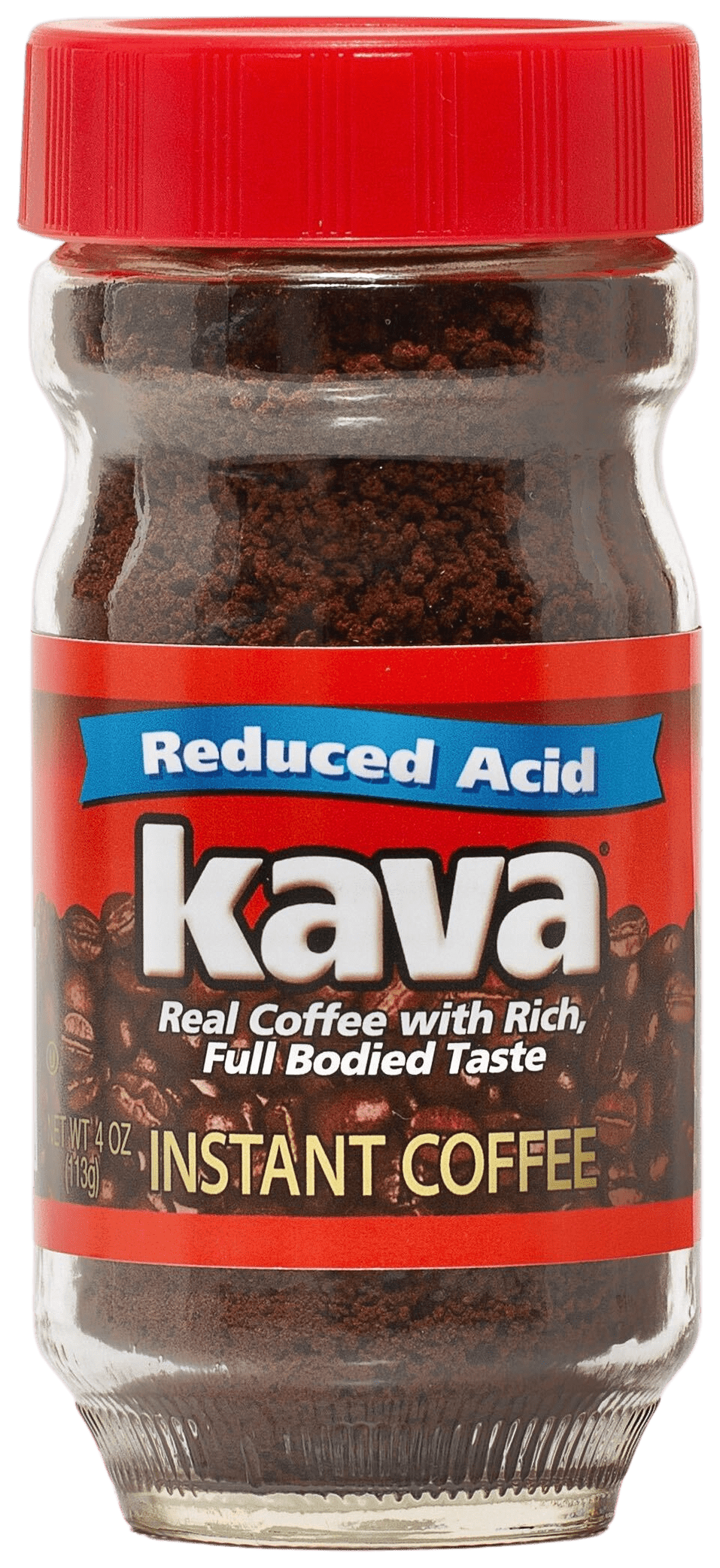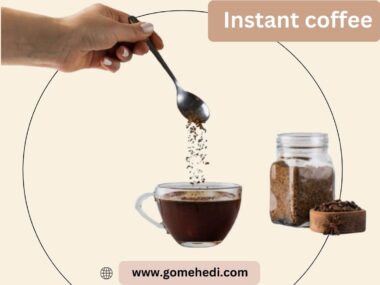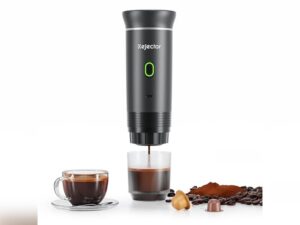Do you love coffee but dread the discomfort it sometimes brings? Discover which coffee has the lowest acidity for smooth, gentle, and flavorful sips.
Many coffee lovers struggle with the acidity in their favorite brew, searching for that perfect cup that satisfies both taste and tummy. Imagine savoring your morning coffee without the nagging heartburn or acid reflux. Sounds like a dream, right? This article is here to help you find out which coffee has the lowest acidity, so you can enjoy your coffee without the unwanted side effects.
Dive in to discover the secrets to a smoother coffee experience that could change your mornings forever.

Credit: www.amazon.com
Acidity In Coffee
Many coffee lovers enjoy a bright cup of joe. Yet, others seek a smoother, less acidic brew. The acidity in coffee affects its taste and how it feels on the stomach. Understanding which coffee has the lowest acidity can improve your coffee experience.
Understanding Coffee Acidity
Acidity is a key component of coffee’s flavor profile. It brings out bright, tangy notes in a cup. This quality is often described as lively or sparkling. Yet, not all coffee enthusiasts enjoy high acidity.
Some people experience discomfort from acidic coffee. This might lead them to seek low-acid alternatives. Various factors influence a coffee’s acidity. These include the type of bean, its origin, and the roasting process.
Types Of Coffee Beans And Their Acidity Levels
- Arabica Beans: Known for their bright, fruity notes. Typically more acidic.
- Robusta Beans: Tend to have a stronger, bitter flavor. Less acidic than Arabica.
Impact Of Coffee Roasting On Acidity
Roasting plays a crucial role in a coffee’s acidity. The longer beans roast, the less acidic they become. Light roasts are usually more acidic. Dark roasts tend to have lower acidity levels. This is due to the breakdown of acids during the roasting process.
Coffee Origin And Its Effect On Acidity
| Region | Acidity Level |
|---|---|
| Africa | High |
| South America | Medium |
| Asia | Low |
Coffees from Africa usually have higher acidity. Beans from Asia are often less acidic. These differences arise from regional growing conditions and climate.
Methods To Reduce Coffee Acidity
- Choose a dark roast.
- Opt for cold brew. It’s naturally less acidic.
- Use a lower temperature for brewing.
- Add milk or cream to neutralize acid.
These methods can help you enjoy a smoother cup. They allow you to savor coffee without discomfort.

Credit: www.walmart.com
Low-acidity Coffee Types
For those who love coffee but dread its acidic nature, exploring low-acidity options can be a game-changer. Low-acidity coffee types are less harsh on the stomach and teeth, providing a smoother drinking experience. Understanding these coffee types can help you enjoy your daily cup without discomfort. Let’s explore some popular low-acidity coffee options that can help you start your day on a gentle note.
Arabica Vs. Robusta
Arabica and Robusta are two primary coffee species, each with distinct characteristics. Arabica beans are known for their smooth, mild flavor and naturally lower acidity. These beans grow at higher altitudes, contributing to their nuanced taste. Arabica is often preferred by those sensitive to acidity, as it offers a more delicate experience.
In contrast, Robusta beans have a more robust, bitter flavor profile. They contain higher caffeine levels, which often leads to increased acidity. For those seeking low-acid coffee, Arabica is generally the better choice.
Here’s a quick comparison:
| Characteristic | Arabica | Robusta |
|---|---|---|
| Acidity | Lower | Higher |
| Flavor | Smooth, mild | Strong, bitter |
| Caffeine | Lower | Higher |
Choosing Arabica over Robusta can significantly reduce the acidity in your cup. Opt for single-origin Arabica from regions like Brazil or Sumatra for an even gentler sip.
Dark Roasts
Dark roasts offer another excellent choice for low-acidity coffee. During the roasting process, beans undergo chemical changes that reduce their acidity. This results in a more mellow and less acidic brew.
Dark roasts are known for their rich, bold flavors. The longer roasting period leads to a decrease in acidity and a boost in body and depth. While lighter roasts maintain more of the bean’s original acidity, dark roasts offer a smooth alternative.
Benefits of choosing dark roasts:
- Reduced acidity
- Full-bodied flavor
- Less caffeine content than lighter roasts
To enjoy a low-acid coffee experience, consider French roast or Espresso blends. These options provide a satisfying cup with minimal acidity, perfect for those with sensitive stomachs.
Cold Brew
Cold brew coffee stands out as a top choice for low-acidity coffee lovers. The brewing method involves steeping coarse coffee grounds in cold water for an extended period, typically 12 to 24 hours.
This process extracts flavors from the beans without the high acidity levels found in hot-brewed coffee. The result? A smooth, mellow cup that’s gentle on the digestive system.
Key benefits of cold brew:
- Significantly lower acidity
- Smooth, sweet flavor profile
- Less bitterness
Cold brew is perfect for those who enjoy iced coffee without the acidic bite. It’s versatile too. You can customize it with milk, cream, or sweeteners to suit your taste. Preparing cold brew at home is easy and cost-effective, making it a popular choice for coffee enthusiasts seeking a low-acid option.
Factors Affecting Acidity
Coffee lovers often seek a brew that is not only flavorful but also gentle on the stomach. Understanding which coffee has the lowest acidity can help in choosing a cup that is both delicious and easy to enjoy. Several factors influence the acidity of coffee, including growing conditions, processing methods, and brewing techniques. Each of these elements plays a crucial role in determining the final acidity level of your coffee.
Growing Conditions
The environment where coffee is grown significantly affects its acidity. Coffee plants thrive in specific climates, and these conditions impact the beans’ flavor profile.
- Altitude: Coffee grown at higher altitudes tends to have higher acidity. The cooler temperatures slow down the maturation process, allowing for complex flavors to develop.
- Soil Composition: The minerals in the soil can also influence acidity. Volcanic soils, rich in minerals, often produce beans with brighter acidity.
- Climate: Regions with distinct wet and dry seasons, such as Ethiopia, often produce coffee with higher acidity.
To reduce acidity, look for coffee grown at lower altitudes or in regions with less pronounced wet and dry seasons. These beans often produce a smoother, less acidic cup.
Processing Methods
The way coffee beans are processed after harvesting can alter their acidity. Different methods bring unique characteristics to the coffee.
- Wet Processing: This method involves removing the fruit from the bean before drying. It often results in a cleaner, brighter cup with more acidity.
- Dry Processing: In this traditional method, beans are dried with the fruit still attached. This can lead to a sweeter, less acidic flavor.
- Honey Processing: A hybrid of wet and dry methods, honey processing leaves some fruit on the bean. This can produce a balanced acidity, with both sweet and tart notes.
Choosing coffee from dry or honey processing methods may offer a more mellow acidity, perfect for those sensitive to more acidic brews.
Brewing Techniques
The method used to brew coffee also affects its acidity. Different techniques can highlight or mellow the acidity in the beans.
| Brewing Method | Effect on Acidity |
|---|---|
| Cold Brew | Reduces acidity, resulting in a smoother cup. |
| French Press | Produces a fuller body with moderate acidity. |
| Espresso | Concentrates flavors, often increasing perceived acidity. |
| Pour Over | Highlights acidity, offering a bright, clean taste. |
For a less acidic coffee, try brewing methods like cold brew, which naturally lowers acidity levels. Alternatively, a French press can offer a richer taste with balanced acidity.
Popular Low-acidity Brands
Are you on a quest for a coffee that won’t upset your stomach? Many coffee lovers seek out brands with low acidity to enjoy their brew without discomfort. Low-acidity coffee is known for its smooth taste and is easier on the digestive system. In this guide, we explore some popular brands that offer low-acidity options. From blends to single-origin and decaf, there’s something for everyone.
Coffee Blends
Many coffee brands offer blends specifically crafted to reduce acidity, providing a smooth and enjoyable cup. These blends often combine beans from different regions, balancing flavors and minimizing acidity levels.
- Pura Vida Coffee: Known for its smooth and rich profile, this blend combines beans from Central and South America.
- Volcanica Low Acid Coffee: This blend is crafted with beans from multiple regions, focusing on a mellow flavor and low acidity.
- Mommee Coffee: Designed for sensitive stomachs, this blend offers a gentle taste and reduced acid content.
Here’s a quick comparison of these blends:
| Brand | Flavor Profile | Acidity Level |
|---|---|---|
| Pura Vida Coffee | Smooth and Rich | Low |
| Volcanica Low Acid | Mellow and Balanced | Very Low |
| Mommee Coffee | Gentle and Soft | Low |
Single-origin Options
Single-origin coffees come from a specific region or farm, offering a unique taste. Some regions naturally produce beans with lower acidity. These options are perfect for those seeking distinctive flavors without the sharpness.
- Sumatra Mandheling: Grown in Indonesia, known for its earthy and complex taste with low acidity.
- Brazilian Santos: This bean from Brazil offers a nutty and sweet profile with minimal acidity.
- Peruvian Coffee: Known for its mild and gentle flavors, perfect for a low-acid cup.
Consider these factors when exploring single-origin options:
- Region: Some regions naturally yield lower acidity beans.
- Processing Method: The way beans are processed can affect acidity levels.
- Roast Level: Darker roasts often have lower acidity.
Decaf Choices
Decaf coffee lovers don’t need to compromise on flavor or worry about acidity. Several brands offer decaffeinated options that are gentle on the stomach and satisfying in taste.
- HealthWise Low Acid Decaf: Made using a water process, this coffee is smooth and low in acid.
- Volcanica Decaf Coffee: Known for its rich flavor and low acidity, perfect for a soothing cup.
- Java Planet Organic Decaf: Offers a clean taste with reduced acidity, ideal for sensitive drinkers.
Key points to consider for decaf choices:
- Decaffeination Process: Methods like Swiss Water Process maintain flavor while reducing acidity.
- Bean Origin: Choose beans from regions known for naturally low acidity.
- Brand Reputation: Opt for brands known for quality and consistency.
Health Benefits Of Low-acidity Coffee
Choosing the right coffee can make a big difference for your health. Coffee with low acidity is easier on the stomach. It helps reduce discomfort and offers a smoother taste. Many people find it beneficial, especially those with sensitive stomachs. Understanding the health benefits of low-acidity coffee can enhance your daily coffee experience.
Digestive Comfort
Low-acidity coffee is gentle on the digestive system. Regular coffee can irritate the stomach lining. This leads to discomfort. Low-acidity options can prevent this irritation. They offer a soothing experience for coffee lovers.
Consider these digestive benefits:
- Less stomach irritation
- Reduced bloating
- Smoother digestion
A study shows that low-acidity coffee may help manage digestive issues. It can be a suitable choice for individuals with gastritis or ulcers. If you struggle with digestive problems, switching to low-acidity coffee might help.
Here’s a quick comparison table:
| Regular Coffee | Low-Acidity Coffee |
|---|---|
| Can irritate the stomach | Gentle on the stomach |
| May cause bloating | Reduces bloating |
Taste Preferences
Low-acidity coffee has a unique taste profile. It’s less bitter. Many people prefer it for its mild flavor. This coffee allows the natural flavors to shine. It creates a balanced taste that coffee enthusiasts enjoy.
Why choose low-acidity coffee?
- Smoother taste
- Less bitterness
- Rich, full-bodied flavor
Some coffee brands specifically roast beans to lower acidity. This enhances the taste. Enjoy a cup without the harsh, acidic bite. It’s perfect for those who savor the intricate flavors in coffee.
Popular low-acidity coffee varieties include:
- Brazilian Coffee
- Sumatran Coffee
- Guatemalan Coffee
Reduced Heartburn
Heartburn can be a pesky problem for coffee drinkers. High acidity in coffee often triggers this discomfort. Low-acidity coffee helps reduce heartburn symptoms. It provides relief for those affected.
Benefits of low-acidity coffee for heartburn include:
- Lower risk of heartburn
- Less acid reflux
- Milder stomach reactions
Research indicates that lower acidity levels in coffee contribute to less irritation. Those with sensitive stomachs find relief in these coffee types. It’s a gentle alternative for daily coffee consumption.
Steps to minimize heartburn:
- Choose low-acidity coffee
- Avoid drinking on an empty stomach
- Limit coffee intake
Embrace low-acidity coffee to enjoy your favorite brew without the worry of heartburn.

Credit: puroast.com
Brewing Tips For Low-acidity Coffee
For coffee lovers seeking a smoother taste, low-acidity coffee is a delight. It offers a gentler flavor profile, perfect for those with sensitive stomachs or who prefer a milder brew. Brewing the perfect cup involves focusing on key factors that influence acidity. Water temperature, grind size, and brewing time are essential elements that need attention. Adjusting these can significantly reduce coffee acidity, making your drink more enjoyable.
Water Temperature
Water temperature plays a crucial role in coffee acidity. It affects the extraction of oils and acids from the coffee beans. Ideal water temperature for brewing low-acidity coffee ranges between 195°F and 205°F. Too hot, and the coffee becomes bitter. Too cold, and it tastes flat.
Consider these tips for optimal brewing:
- Use a thermometer: Ensure your water is within the ideal temperature range.
- Preheat your brewing device: This maintains a consistent temperature during the brewing process.
- Adjust water temperature: Lower temperatures can help reduce acidity.
Below is a simple guide to water temperatures for different brewing methods:
| Brewing Method | Temperature Range (°F) |
|---|---|
| Drip Coffee Maker | 200-205 |
| French Press | 195-200 |
| Espresso | 195-200 |
Grind Size
Grind size directly influences coffee flavor and acidity. Finer grinds increase acidity, while coarser grinds lower it. Choosing the right grind size is crucial for balancing flavors.
Here are some grind size tips:
- Use a burr grinder: It ensures consistent grind size, which is essential for reducing acidity.
- Experiment with grind sizes: Start with a medium grind and adjust according to taste.
- Consider the brewing method: Different methods require different grind sizes. For instance, French Press uses coarse, while drip coffee needs medium.
Below is a guide to grind sizes for various brewing methods:
| Brewing Method | Recommended Grind Size |
|---|---|
| French Press | Coarse |
| Drip Coffee Maker | Medium |
| Espresso | Fine |
Brewing Time
Brewing time affects the extraction of acids and flavors. Longer brewing can lead to increased acidity, while shorter times might result in weak coffee.
Consider these brewing time tips:
- Adjust brewing time: Aim for a balance between flavor and acidity.
- Monitor extraction: Over-extraction leads to bitterness, while under-extraction results in sourness.
- Use timers: They help achieve consistent brewing times.
Below is a guide to optimal brewing times for different methods:
| Brewing Method | Recommended Time (minutes) |
|---|---|
| French Press | 4-5 |
| Drip Coffee Maker | 5-6 |
| Espresso | 1-2 |
Frequently Asked Questions
Which Type Of Coffee Is The Least Acidic?
Low-acid coffee varieties include Arabica beans, cold brew, and dark roast. Arabica beans naturally have less acidity. Cold brew reduces acidity through brewing. Dark roast coffee beans have lower acid levels due to longer roasting times. These options are ideal for those seeking less acidic coffee.
What Coffee Is Best For Acid Reflux?
Low-acid coffee is best for acid reflux. Choose dark roasts, as they have less acidity. Cold brew coffee is also a great option, as it reduces acid levels. Look for brands specifically labeled “low-acid” to minimize discomfort.
Which Coffee Is Mildest?
Light roast coffee is the mildest option. It has a smooth flavor with subtle acidity. Popular mild coffee varieties include Colombian and Brazilian blends. Choose Arabica beans for a less intense taste. Light roast coffees are perfect for those who prefer a gentle start to their day.
What Is The Least Acidic Caffeine Drink?
The least acidic caffeine drink is cold brew coffee. It has a smoother taste and lower acidity than regular coffee. Cold brew is brewed with cold water, reducing acid levels. It is a great option for those sensitive to acidity while still enjoying caffeine.
Conclusion
Finding coffee with low acidity can improve your coffee experience. Choose from options like cold brew, dark roast, or low-acid blends. They offer a smoother taste and are gentler on your stomach. Remember, each coffee type has its own unique flavor.
Experiment with different beans to find your favorite. Balance taste with acidity to enjoy your perfect cup. Enjoy your journey in discovering the right coffee. A little trial and error will lead to the best choice. Happy brewing and sipping!








